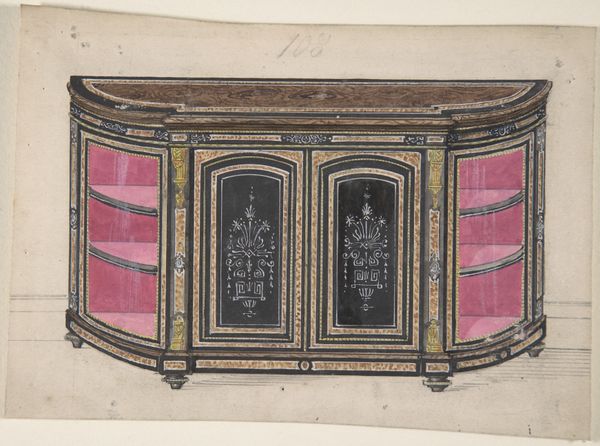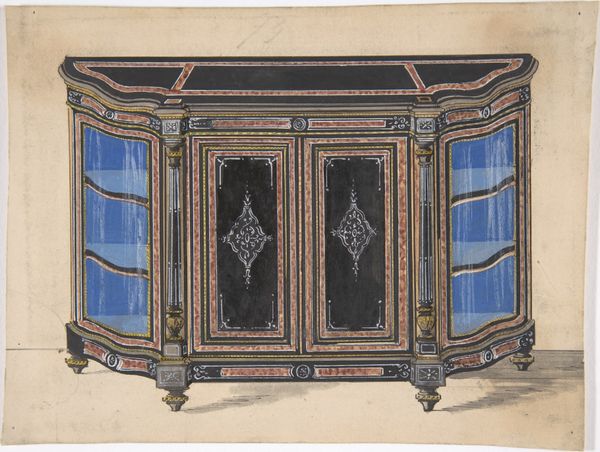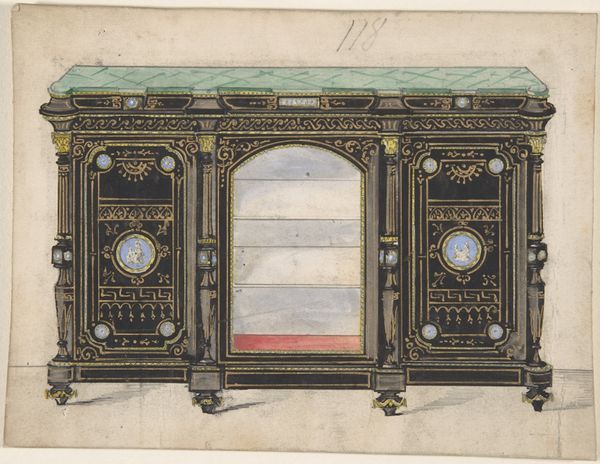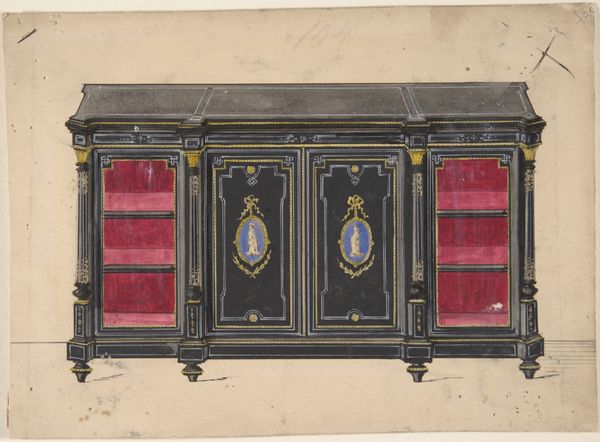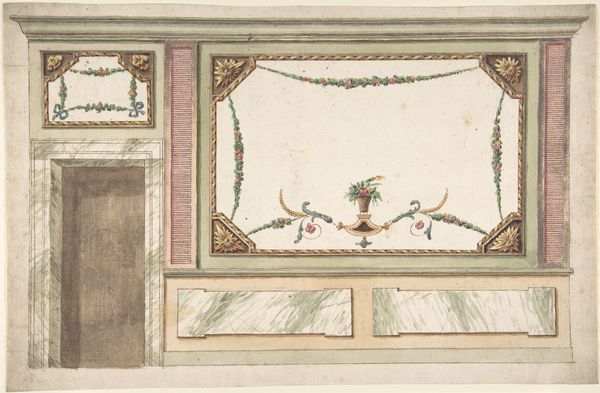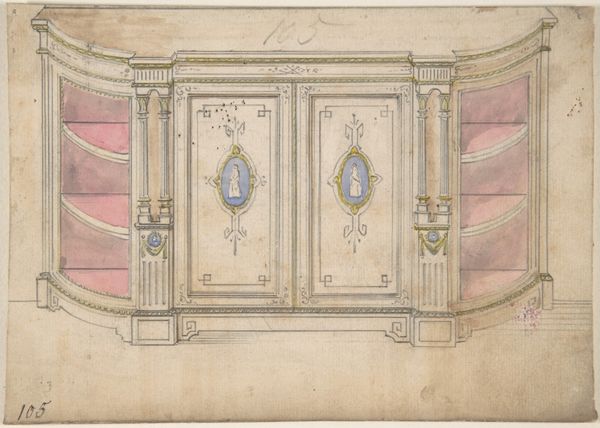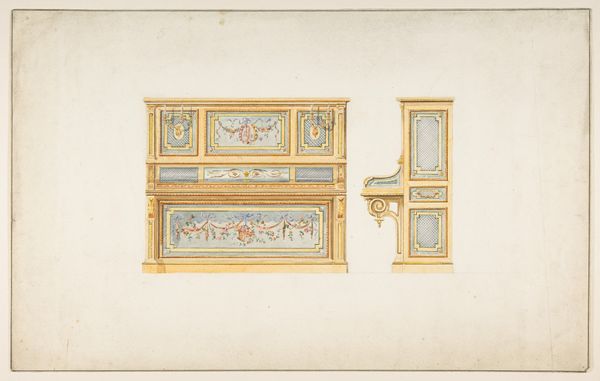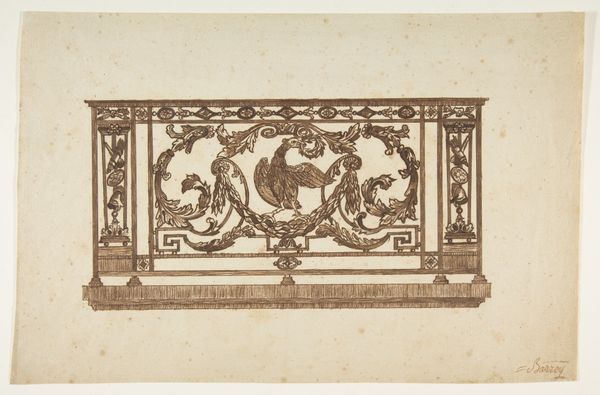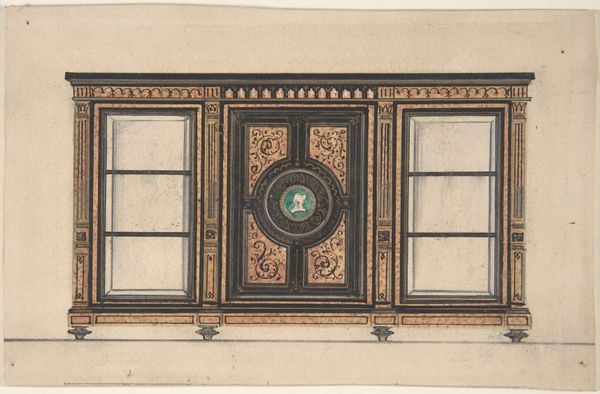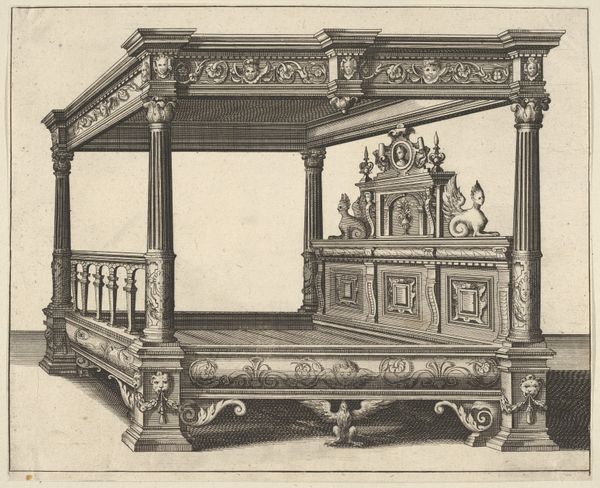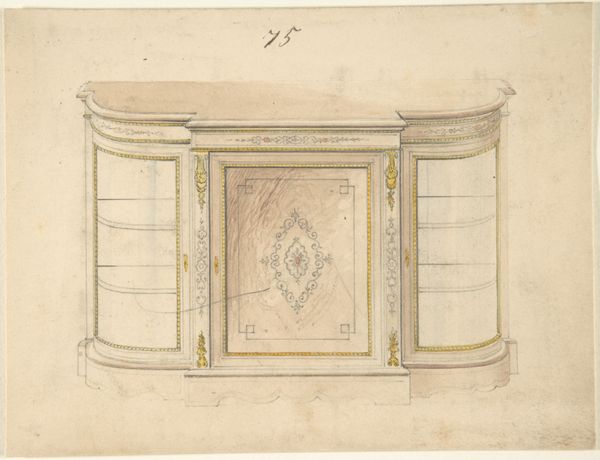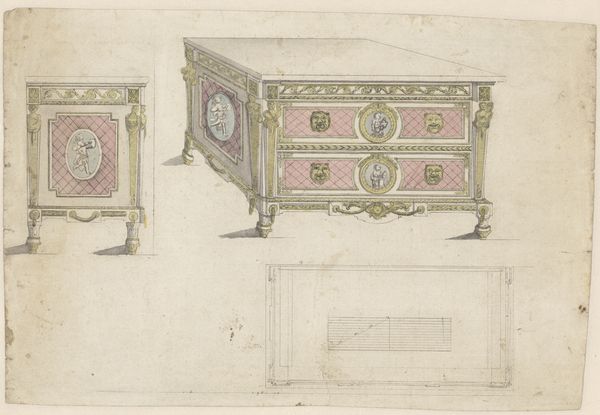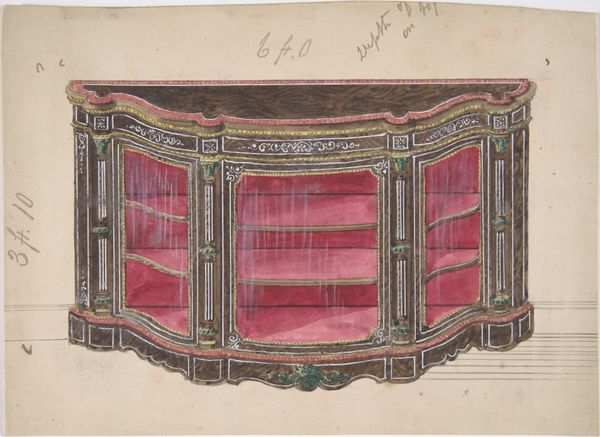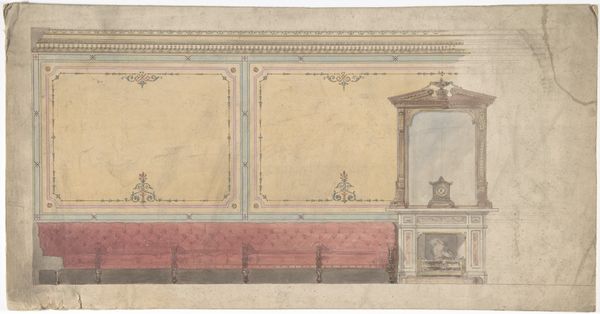
Design for a Cabinet with Two Central Shelves and Arched Doors 1800 - 1900
0:00
0:00
drawing, coloured-pencil, print, watercolor
#
drawing
#
coloured-pencil
# print
#
watercolor
#
coloured pencil
#
geometric
#
watercolour illustration
#
decorative-art
Dimensions: sheet: 5 3/16 x 7 9/16 in. (13.1 x 19.2 cm)
Copyright: Public Domain
Curator: Looking at this, I immediately feel a certain delicate formality. There's something almost theatrical about the cabinet's presentation, don't you think? Editor: Indeed. We're looking at "Design for a Cabinet with Two Central Shelves and Arched Doors," a drawing from somewhere between 1800 and 1900, held here at the Metropolitan Museum of Art. The artist is, unfortunately, unknown. It's a rather striking combination of watercolor and colored pencil on paper. Curator: Watercolors and colored pencils! How unexpectedly light. Considering the subject—a cabinet design—I anticipated something heavier. What grabs me is the tension between the rather serious intent and the medium's airy feel. Like a dream of functionality. Editor: I find the architectural elements most compelling—particularly the interplay between the geometric and the organic. Notice the arches and how they're echoed in the cabinet's details and the forms of the vases placed on the shelves? This repetition creates a structured visual rhythm, drawing the eye across the entire composition. Curator: Oh, those arches do sing, don't they? They add such grace, like borrowed melodies from some grand hall, even hinting at the architecture of a mosque. Yet there's this inherent contradiction. The design feels so... stationary. It's a fixed point, a piece of furniture meant to hold other things, yet rendered with a fluidity that suggests movement and evolution. It feels paradoxical and charming! Editor: The colours too; that muted palette of black, pale pink, and shades of umber. One finds this is typical of design drawings where the intent is to show the form in more nuanced shades. Here the intention may have been to soften the boldness of the overall form through restrained coloring. I agree, paradox creates visual appeal. Curator: I love that it exists simply as a proposal. The question of who dreamt it up—who had this vision of a contained universe where useful items become art—keeps me wondering! Editor: For me, it prompts reflections on structure versus whimsy in our daily lives and art objects; the balance shifts constantly!
Comments
No comments
Be the first to comment and join the conversation on the ultimate creative platform.
